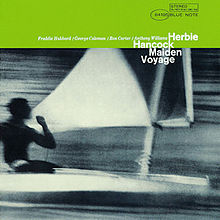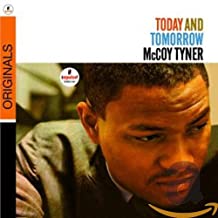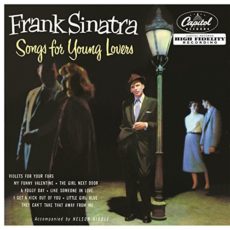
The Quarantined Jazz Voyager
The Quarantined Jazz Voyager is pulling down from the shelves a timeless classic that has been a part of my collection since 1971. Maiden Voyage is the fifth album led by jazz musician Herbie Hancock and was recorded by Rudy Van Gelder on March 17, 1965, for Blue Note Records.
It is a concept album combining modal and hard bop modes aimed at creating an oceanic atmosphere. Many of the track titles refer to marine biology or the sea, and the musicians develop the concept through their use of space. The album was presented with the Grammy Hall of Fame Award in 1999.
The five compositions that comprise the album are Maiden Voyage, The Eye Of The Hurricane, Little One, Survival Of The Fittest and Dolphin Dance. The personnel on the date are pianist Herbie Hancock, trumpeter Freddie Hubbard, tenor saxophonist George Coleman, bassist Ron Carter, and drummer Tony Williams.
Stay diligent my fellow voyagers in being healthy, continue to practice social distancing, and don’t be so anxious to rush back to the new normal. It has been said that music soothes the savage beast, so listen to great music. I share that music to give you a little insight into the choices this voyager has made over the years during this sabbatical from jet setting investigations of jazz around the globe.
More Posts: adventure,club,genius,jazz,museum,music,preserving,restaurant,travel,voyager

Requisites
Today and Tomorrow is the fourth album by jazz pianist McCoy Tyner. It was produced by Bob Thiele and recorded for the Impulse! label in 1963 and 1964.
Tracks | 38:44 ~ All compositions by McCoy Tyner except where noted
- Contemporary Focus ~ 8:28
- A Night in Tunisia (Gillespie) ~ 5:07
- T ‘N A Blues (Jones) ~ 4:05
- Autumn Leaves (Kosma) ~ 6:10
- Three Flowers ~ 10:12
- When Sunny Gets Blue (Marvin Fisher, Segal) ~ 4:42
- McCoy Tyner ~ piano
- Jimmy Garrison ~ bass (4-9)
- Albert Heath ~ drums (4-9)
- John Gilmore ~ tenor saxophone (1-3)
- Thad Jones ~ trumpet (1-3)
- Frank Strozier ~ alto saxophone (1-3)
- Butch Warren ~ bass (1-3)
- Elvin Jones ~ drums (1-3)
I was in the mood to hear some piano jazz a few nights ago when I came across a title I’d not listen to for a while. I’ve never heard anything by pianist McCoy Tyner that I didn’t like and the album up for discussion before learning of his passing on March 7, 2020, is no exception. I placed the record on my Dual 1246 turntable, dropped the stylus and became immersed in the music of this gifted musician. Today and Tomorrow (Impulse! A-63) was recorded and released in 1964 while McCoy (only twenty-five years old at the time) was still a member of The John Coltrane Quartet. Here, he’s featured in three sextet and trio settings each leading an all-star group of Thad Jones on trumpet; Frank Strozier on alto sax; John Gilmore on tenor sax; Butch Warren on bass; Elvin Jones on drums (tracks: A1, A3, B2); Jimmy Garrison on bass; Tootie Heath on drums (tracks: A2, B1, B3). My copy used in this report is the 1972 Stereo reissue (Impulse!-ABC Records AS-63), the fourth US pressing.
Contemporary Focus, the first of three tunes by McCoy opens this six-song journey with a rousing collective midtempo theme treatment led by Thad who wails strongly on the lead solo. John and Frank demonstrate their strengths with vibrant enthusiasm for the next two readings. McCoy follows with a briskly swinging interpretation, then Butch and Elvin make the most of two brief juicy opportunities ahead of the closing chorus and fadeout.
A Night In Tunisia by Dizzy Gillespie and Frank Paparelli is a jazz standard from 1942 with many notable vocal and instrumental recordings to its credit. Jimmy Garrison and Tootie Heath provide the musical backing for this uptempo trio rendition beginning with an exhilarating theme treatment in unison. The pianist begins the opening statement at a very high temperature of molten intensity, then Tootie responds with a riveting performance that has lots of fireworks ahead of the pianist’s exuberant finale.
T’N A Blues, also by Tyner strolls in next to end the first side at midtempo with a relaxed attitude by the sextet on the opening chorus. Gilmore and Tyner are the featured soloists and John goes to work first with an infectiously happy groove. McCoy provides the summation on a leisurely paced performance that’s very danceable leading to the ensemble reassembling for the coda.
Side Two opens with the 1945 popular jazz standard Autumn Leaves by Joseph Kosma, Jacques Prévert who wrote the French lyrics for the song’s original title, Les Feuilles Mortes (The Dead Leaves), and Johnny Mercer who created the English lyrics. The trio exhibits their infectious chemistry on a lively intro that evolves into the sprightly opening chorus. McCoy kicks off the solos with a dazzling display of finger dexterity with a spirited performance of effortless spontaneity. Jimmy steps in next, walking his bass with bristling vitality and tastefulness, then Tyner communicates a few final choruses of brisk dialogue preceding the effervescent reprise and climax.
Three Flowers is the leader’s longest composition on the album, a mid-tempo waltz offering substantial solo space to himself, Thad, Frank, and John. The sextet opens with a delightfully charming melody and Tyner starts the soloing with an engaging reading possessing incredible beauty and enchantment. Thad follows with a beautifully phrased, vivaciously soulful presentation that’s lyrically pleasant. Frank keeps the ingredients stirring on the next solo with inherent high spirits, and buoyant lyricism. John takes the last spot with an exquisite solo that swings with a swagger into the melody reprise and coda.
The 1956 jazz standard, When Sunny Gets Blue by Marvin Fisher and Jack Segal brings the album to a close with a thoughtfully tranquil theme treatment led by Tyner. McCoy has the solo showcase to himself and gives an enchanting reading of elegant tenderness bringing the listener home with a gentle closing chorus and culmination.
The recording by Rudy Van Gelder is splendid with an excellent soundstage throughout the treble, midrange, and bass spectrum. Each instrument emerges from your speakers to your listening chair as if you’re in the studio with the musicians as they’re recording, producing a gorgeous sound reminiscent of his Blue Note recordings of the period. I had the pleasure of seeing McCoy Tyner three times live, twice here in Atlanta where I got to meet him and once at The Village Vanguard in New York City. He was an incredible musician and wonderful man who was never too busy to meet and chat with his fans, yours truly among them. If you’re a fan of piano jazz or are looking for a terrific album of Modal Jazz and Post-Bop that’s subdued, subtle, and also energetic, I offer for your consideration, Today and Tomorrow by McCoy Tyner. An extremely skilled musician who whether in performance or on record always brought out the absolute best in each of his bandmates.
Autumn Leaves, Night In Tunisia – Source: JazzStandards.com When Sunny Gets Blue – Source: Wikipedia.org © 2020 by Edward Thomas Carter
More Posts: choice,classic,collectible,collector,history,instrumental,jazz,music,piano

Daily Dose Of Jazz…
Theodore Malcolm Nash was born on October 31, 1922 in the Boston suburb of Somerville, Massachusetts. His goal was to become a classical flutist until he began playing saxophone in his early teens. His professional career began when he went on the road with a succession of dance bands, landing the solo tenor chair with the Les Brown band in 1944 where he rapidly made a name for himself.
His playing was notable for his mastery of the extreme altissimo register of the saxophone. He authored Ted Nash’s Studies in High Harmonics for Tenor and Alto Saxophone published in 1946, that is still in print.
In the late 1940s Ted became part of the thriving Hollywood movie and television recording industry. In 1956 he recorded with Paul Weston’s orchestra the hit album Day by Day, with vocals by his former colleague and close friend, Doris Day.
He was featured on The Music from Peter Gunn soundtrack album performing the bluesy, high-energy alto sax solo on the theme as well as the wistful alto sax solo on the second bridge of Dreamsville. Henry Mancini composed The Brothers Go to Mother’s from Peter Gunn as a feature for Ted and and his trombonist Dick.
From the mid 50s through the end of the Sixties he recorded sixteen albums with Georgie Auld. Henry Mancini, Elmer Bernstein, Pete Rugolo, Lalo Schifrin. Saxophone, flute and clarinet Ted Nash, who was a first-call session musician in the Hollywood recording studios, passed away on May 12, 2011.

Daily Dose Of Jazz…
Taft Jordan was born on February 15, 1915 in Florence, South Carolina and as a trumpeter was heavily influenced by Louis Armstrong. Early in his career he played with the Washboard Rhythm Kings before joining Chick Webb’s orchestra from 1933 to 1942. He remained with Webb after Ella Fitzgerald became its frontwoman, trading duties with Bobby Stark as the orchestra’s main trumpet soloist.
From 1943 to 1947 Taft played with Duke Ellington, then with Lucille Dixon at the Savannah Club in New York City from 1949 to 1953. After this stint he played less often, though he toured with Benny Goodman in 1958, played on the Miles Davis album Sketches of Spain, and worked with the New York Jazz Repertory Company.
In 1935 Jordan recorded four tunes, Night Wind, If the Moon Turns Green, Devil in the Moon, and Louisiana Fairy Tale as a leader, with Ward Silloway on trombone, Johnny Mince on clarinet, tenor saxophonist Elmer Williams, pianist Teddy Wilson, guitarist Bobby Johnson, John Kirby on string bass and drummer Eddie Dougherty. He would go on to lead his own band in 1960 and ‘61, recording LPs for Mercury, Aamco Records, and Moodsville labels, as well as with Ruth Brown on Atlantic Records and Dizzy Gillespie on the Norgran label.
Trumpeter Taft Jordan passed away on December 1, 1981 in New Orleans, Louisiana.
Sponsored By

![]()
#preserving genius
More Posts: trumpet

Daily Dose Of Jazz…
Irving Cottler was born on February 13, 1918 in New York City, New York. Learning to play the drums, at age 14, he falsified his age to acquire a musician’s union card, and honed his chops playing the Catskills resort circuit. After stints with Red Norvo and Mildred Bailey, he toured California behind Claude Thornhill, vowing to ultimately relocate cross-country.
Stints with Larry Clinton, Tommy Dorsey, and Les Brown followed, but in 1947, finally retiring from the road, Irv settled in Los Angeles, California. He became a first-call session drummer renowned for his impeccable timekeeping, he was a sometime member of The Wrecking Crew, recording behind Nat King Cole, Louis Armstrong, Bing Crosby, Ella Fitzgerald and numerous others.
A personal favorite of arranger Nelson Riddle, he was summoned by Riddle in 1953 to play on what would become Frank Sinatra’s first LP for Capitol Records, the now-classic Songs for Young Lovers. Cottler quickly emerged as Sinatra’s drummer of choice and bandleader, remaining with Ol’ Blue Eyes in various studio and tour incarnations for more than 30 years. Crooners Sammy Davis, Jr., Dean Martin, Mel Tormé, and Bobby Darin sought out his services as well, and for the Somerset label he headlined the exotica cult classic Around the World in Percussion.
A staple of film and television, Irv highlighted his career in the medium with a 12-year stint with The Dinah Shore Show’s house band. He authored a book, I’ve Got You Under My Skins, which is a unique publication that features the original drum charts for all of the popular Frank Sinatra tunes on the CD. The charts were reprinted as a book, adding performance hints and in-studio photos.
Drummer and bandleader Irv Cottler, who also recorded with Count Basie, Hoagy Carmichael, Stan Kenton and Barney Kessel, passed away on August 8, 1989 in Rancho Mirage, California.
Sponsored By

Voices From The Community
![]()
#preserving genius
More Posts: drums



